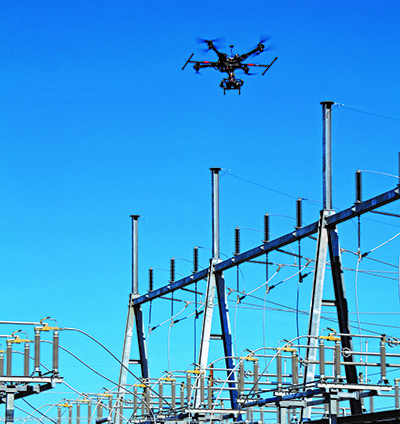With over 2,300 miles of energized line across a nearly 2,000-square-mile service territory in northeast Oregon, Umatilla Electric Cooperative (UEC) continues to implement advanced measures to provide reliability and resiliency to its 10,700 members.
Those advanced measures? Unmanned aerial systems, also known as drones, that are capable of capturing photos and video at a higher rate and lower cost than historical practices. Working with Eagle-Eye Aerial Solutions of Everson, Wash., UEC now uses drones to help discover deficiencies found along the electrical system during inspections.

Traditionally, inspecting lines has been time-consuming, expensive and sometimes dangerous. Before the addition of drones, there were times when line crews would need to get a closer look at a possible fault and would need to get close to energized lines to do so.
“Safety is always a priority at UEC; these drones support that priority,” said Kevin Knutz, UEC’s Manager of Operations.
Inspecting from the ground makes it difficult to get a holistic approach to a pole or attached equipment. “We truly do have a bird’s eye view while performing these inspections, allowing us to stay ahead of faults and to identify even the smallest details,” Knutz said.
Whether it’s age, animals or the often-harsh northeast Oregon weather, infrastructure on the system can sometimes be tested. “There may be broken insulators, loose cotter keys or broken ground wires,” he said. “Whatever the fault may be, the earlier we can detect it, the less of an impact our members will have to face.”
In timing the inspections, UEC focuses on the summer months for taking photos and video, and cooler weather is preferred for infrared photography, as it better shows whether a transformer or other device is beginning to overheat and may need replacement.
Drone technology is a rapidly evolving industry with new innovations appearing on an almost daily basis, said Sam Adams, owner of Eagle-Eye Aerial Solutions.
“When we first started in 2016, it was an achievement just to obtain stable footage while staying aloft,” he said. “In today’s world, we are now seeing the integration of an incredible array of different sensors such as high-range optical zoom lenses, thermal sensors and lidar scanners.”
The various drone manufacturers are starting to develop unique techniques and tools to help assist line crews with tasks such as hanging bird deflectors, line pulling and pressure washing of lines, he said.
For its part, UEC will continue to move forward with innovation at the top of mind, right behind the well-being of members.
“The value is simple – the more faults we can detect ahead of time, the fewer outages our members will face,” Knutz said.









